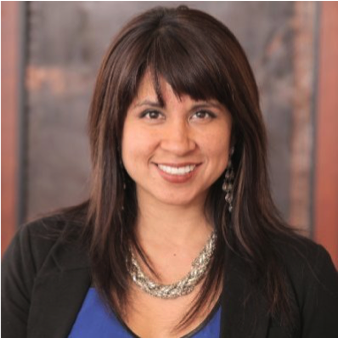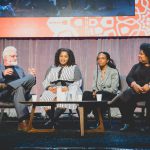 What should robust evaluation and measurement of impact investing look like? Last year The Rockefeller Foundation partnered with SOCAP to explore that question through a series of five SOCAP16 conference sessions focused on measurement and evaluation in impact investing and social enterprise. The series brought together diverse leaders from the impact community and outside experts on data, measurement, and evaluation, to share their expertise. It was clear from these discussions that there is a groundswell of interest in measurement and evaluation.
What should robust evaluation and measurement of impact investing look like? Last year The Rockefeller Foundation partnered with SOCAP to explore that question through a series of five SOCAP16 conference sessions focused on measurement and evaluation in impact investing and social enterprise. The series brought together diverse leaders from the impact community and outside experts on data, measurement, and evaluation, to share their expertise. It was clear from these discussions that there is a groundswell of interest in measurement and evaluation.
Following the conference, a report supported by The Rockefeller Foundation and co-authored by two designers of those sessions, Jane Reisman and Veronica Olazabal, was released. “Situating the Next Generation of Impact Measurement and Evaluation for Impact Investing” explores various ways the impact investment field, and market-based approaches in general, can establish evidence of social and environmental impacts. We recently spoke with Reisman, the founder of ORS Impact and measurement and evaluation advisor for The Rockefeller Foundation and Olazabal, the director of measurement, evaluation, and organizational performance at the Foundation.
SOCAP: Please describe your journey to understanding the impact measurement and evaluation state of the field.
Jane Reisman: I’ve been on this journey with Veronica and her colleague Nancy MacPherson, the managing director for evaluation, who have been spearheading this at The Rockefeller Foundation. They are attempting to strengthen the evidence base for impact investing and other market solutions because the Foundation has such a strong interest in how to best leverage all forms of capital, including the private sector, to achieve ambitious goals around poverty and resiliency. The evidence base for these approaches really hasn’t kept pace with the growth of impact investing.
Veronica Olazabal: Over the last few years, we have observed tensions between the state of the field and the growth in the evidence base around impact. Part of what happened last year—a large focus of the SOCAP series as well as other discussions anchored by the Rockefeller Philanthropy Advisors, Social Value International, and American Evaluation Association—was confirming demand from the investment community. From that standpoint, last year was a big year for testing this question: Is there demand for strengthening the evidence base? Resoundingly the answer was “yes.”
What are the main headlines in the report?
 Veronica Olazabal: The report begins with a review of the current state of impact investing measurement and the social sector and provides a rationale for why this topic continues to be both relevant and critical to addressing global issues. One of the main messages of the paper is that not all social sector investors are the same and thus, they do not need the same level of evidence to make decisions nor do they need to contribute to the impact dialogue in the same way. We believe that, as with financial impact, the risk-return spectrum also holds for social sector impact. Others have also made this observation. So we lay out some propositions: that measurement practices need to evolve and that new practices have to borrow from the strengths of both business and social sectors. The social sector has been working on measuring impact for over 65 years. While working under different assumptions and likely at a different part of the risk-return spectrum than impact investing, “how” to go about measuring social and environmental outcomes and impacts is likely similar enough to provide cross-learning.
Veronica Olazabal: The report begins with a review of the current state of impact investing measurement and the social sector and provides a rationale for why this topic continues to be both relevant and critical to addressing global issues. One of the main messages of the paper is that not all social sector investors are the same and thus, they do not need the same level of evidence to make decisions nor do they need to contribute to the impact dialogue in the same way. We believe that, as with financial impact, the risk-return spectrum also holds for social sector impact. Others have also made this observation. So we lay out some propositions: that measurement practices need to evolve and that new practices have to borrow from the strengths of both business and social sectors. The social sector has been working on measuring impact for over 65 years. While working under different assumptions and likely at a different part of the risk-return spectrum than impact investing, “how” to go about measuring social and environmental outcomes and impacts is likely similar enough to provide cross-learning.
Additional questions we dive into are related to what is the state of the art right now? The report does not go through all the specific examples—there have been tons of inventories of who is doing what. What we tried to do is categorize the measurement practices that are shared publicly because so many of them are proprietary—essentially segmenting approaches by purpose and needs. What we found is that the majority of investors are concentrated on standards, such as the IRIS (Impact Reporting and Investment Standards) catalog of metrics produced by the Global Impact Investing Network (GIIN) and others, such as environmental, social, and governance (ESG) approaches. We believe this is a sign that impact investors are using standard metrics as a way of saying we are going to document our impact.
Interestingly, the GIIN has been publicly stating that IRIS was never intended as the be-all and end-all, but that it was an important starting point. Building on this work, the GIIN today is going deeper and looking closely at how to align investments with impact goals—for example, through expansion of their Navigating Impact Initiative with support from The Rockefeller Foundation.
 Jane Reisman: Standards are a great start, but there are also other ways of measuring and more specific ideas about measurement that go deeper toward building an evidence base—for example, performance monitoring. A great example of performance monitoring is the Lean Data approach that the Acumen Fund has popularized. It goes beyond outputs to consider social performance outcomes. Social performance is becoming very popular. Many funds are starting to develop performance monitoring and management approaches that move beyond metrics, and into “how” to measure, that is, how to collect the necessary data. We believe this is a good sign, especially since social and environmental metrics are not as straightforward to capture as financial metrics.
Jane Reisman: Standards are a great start, but there are also other ways of measuring and more specific ideas about measurement that go deeper toward building an evidence base—for example, performance monitoring. A great example of performance monitoring is the Lean Data approach that the Acumen Fund has popularized. It goes beyond outputs to consider social performance outcomes. Social performance is becoming very popular. Many funds are starting to develop performance monitoring and management approaches that move beyond metrics, and into “how” to measure, that is, how to collect the necessary data. We believe this is a good sign, especially since social and environmental metrics are not as straightforward to capture as financial metrics.
These are positive signs, but they are more along the lines of management and monitoring for understanding whether a fund is reaching its intended goals. These approaches do not provide deeper analysis of the whys and external factors, which are important for investors to consider. Often a distinction between monitoring and evaluation is that evaluation asks additional layers of questions to understand how things work and what’s in the way of things working and what are the unintended consequences. Evaluation uses a variety of methods to produce Rigorous Outcome and Impact Evaluations Studies. That stands in contrast to the lean data approach, which is very important for social performance monitoring and a real step forward from using metrics alone.
We also discuss the importance of understanding a market system and system factors if you want to have impact. That has not been talked about much. Looking at the service, resource, or the product alone won’t help you understand whether you’re having impact, or what’s in the way of impact. You must also look at the system factors that surround the intended impact. I recently read a great example of that in a report about internet connectivity. Even though internet technology has reached 80 percent of the globe, only 40 percent of the people it reaches are using an internet connection because factors in the market them from using it. That is when you really need to start looking at systems approaches.
We are suggesting that there is another level of evaluation beyond the business model for most individual impact investment organizations and funds. As a collective, and in many other ways, that is something that needs to be understood. This systems approach has been used quite a bit in multilateral work and as the private sector and impact investors continue to get into impact work, grounding their thinking in a systems mindset and measuring system factors will be important for producing the impact.
What reaction do you hope to see in response to this report?
Jane Reisman: This paper hopes to catalyze a convergence of methods—not looking at any one method as the be-all and end-all, but assessing the situation and determining which method will be most effective in a particular situation. We are suggesting different situations will call for different methodologies and not just a single standard. It is important to look deeper and consider the measurement approach that is being used and the goals you are trying to reach. That will help you determine what method makes the most sense.
It is really a good time for the impact investing industry and the social sector to begin working more collaboratively. They’ve been working in parallel streams and haven’t really connected very much. But over the past year, cross-fertilization has started to happen. The evaluation community is a good partner for the impact investment community in this endeavor. Instead of reinventing the wheel in the social capital markets there are lots of good ideas, tools, and methods that can be built upon and adapted to the new field. Everyone must innovate and create something new in this space.
Looking forward, are there any resources that you would point the SOCAP community to look to?
Jane Reisman: Tremendous work is happening across the globe, across disciplinary teams, and across industry teams—large investors, institutional investors, high net worth individuals, asset managers, asset owners, and evaluators and impact analysts. There are far more conversations happening in allied fields, including the microfinance community. There are five major initiatives that the SOCAP community should be aware of:
- The Navigating Impact work being led by the GIIN;
- The Impact Management Project facilitated by Bridges Ventures;
- The Global Steering Committee that is a follow up from the G8 Task Force;
- A new World Economic Forum initiative related to impact investing that was discussed in a session at the World Economic Forum in January and is the subject of an action agenda; and
- The Social Performance Task Force, which is focusing on inclusive economies and financial service providers with social goals and that brings to the table a robust history of learning around impact measurement and evaluation.
Veronica Olazabal: Most importantly, I would say, keep your eyes open for a new generation of measurement and management. Management is as important as measurement. The GIIN created the business case for why measurement helps to manage investments for impact better. Clearly there is lots of demand and lots of commitment to strengthening the process for generating evidence and this is a real game changer.





